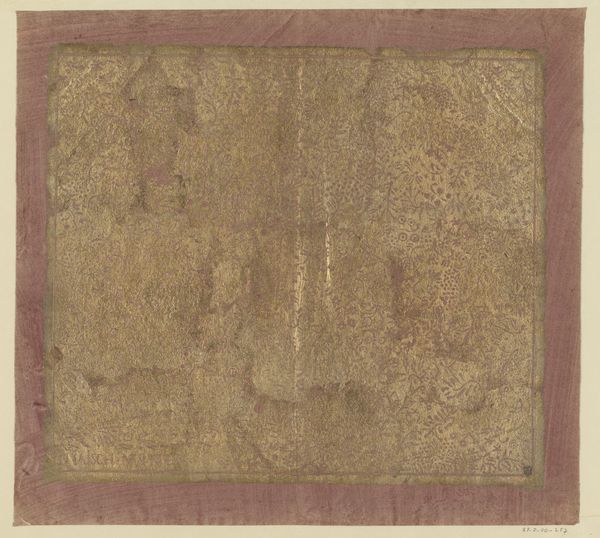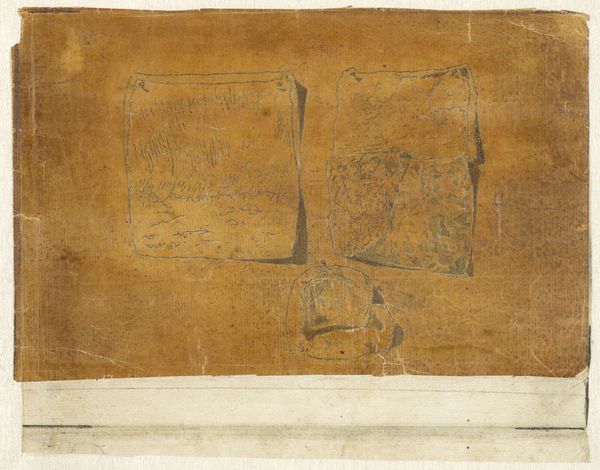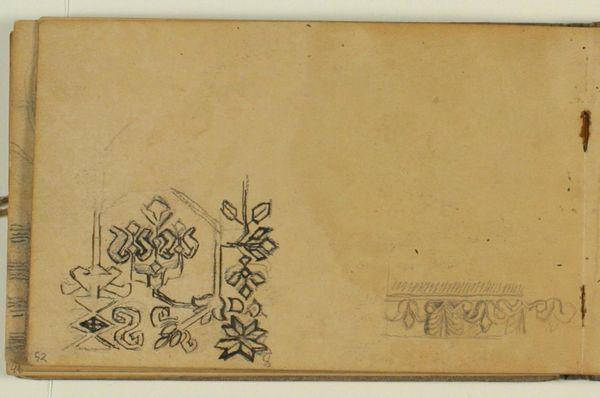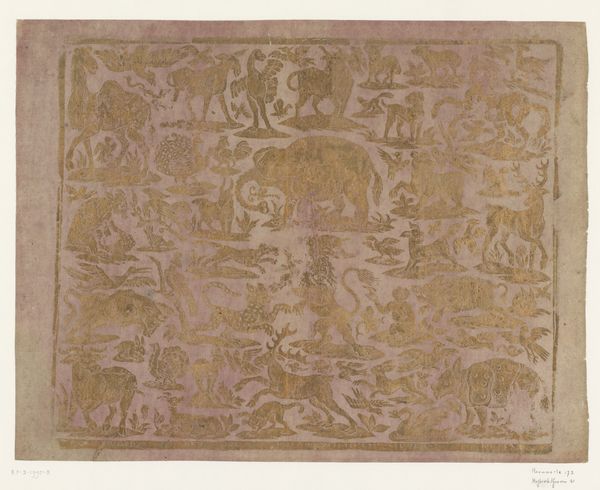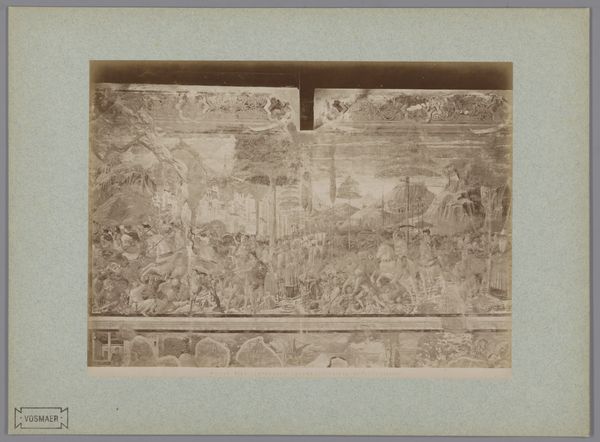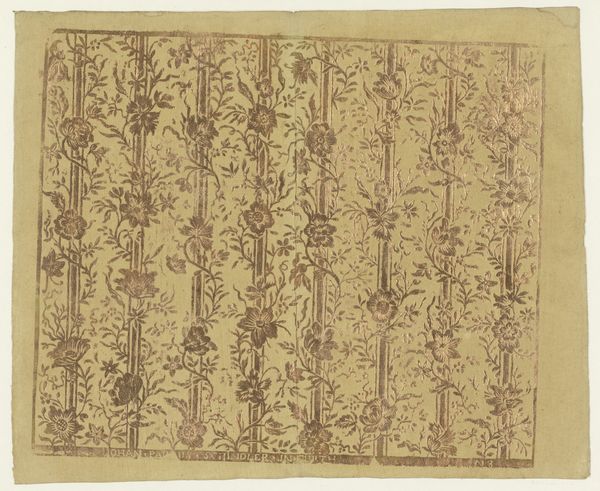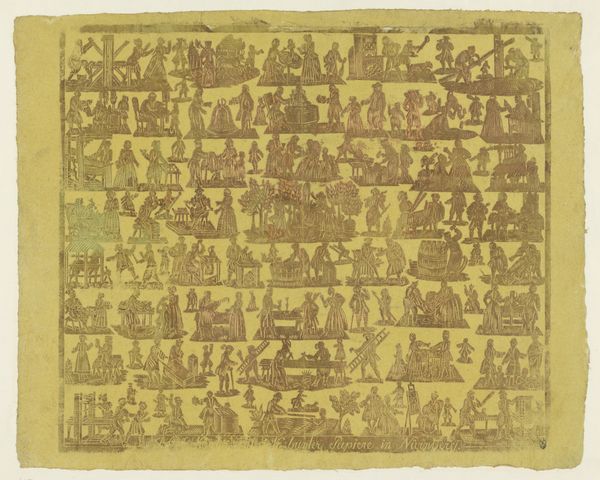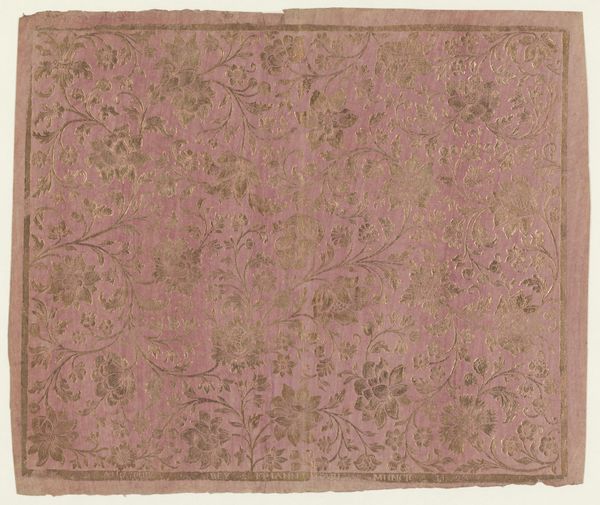
print, engraving
#
medieval
#
narrative-art
# print
#
figuration
#
linocut print
#
engraving
Dimensions: height 300 mm, width 362 mm
Copyright: Rijks Museum: Open Domain
This print, titled "Blad met in drie rijen zes ridderscènes", was made by an anonymous artist, but let’s not let that anonymity diminish our consideration of the work. It’s made with metal cut in a repeating pattern over three registers on a piece of dyed textile. The process of cutting metal is laborious, demanding precision and skill. Metalwork like this would have been made by a trained artisan, working within a guild structure that defined standards and protected trade secrets. The original function of this sheet is unknown, though it may have served as a template or embellishment on a larger work. The cultural significance is in its rendering of popular chivalric tales in a distinctly reproducible form. Was it originally used in a domestic setting? Perhaps hung on the wall of a middle class home? What is the relationship between the metallic material, the skilled labor required to produce the sheet, and its intended consumer? Paying attention to the materials and the making of this artwork reveals a history of craft, labor, and popular culture. It challenges traditional distinctions between fine art and craft.
Comments
No comments
Be the first to comment and join the conversation on the ultimate creative platform.


